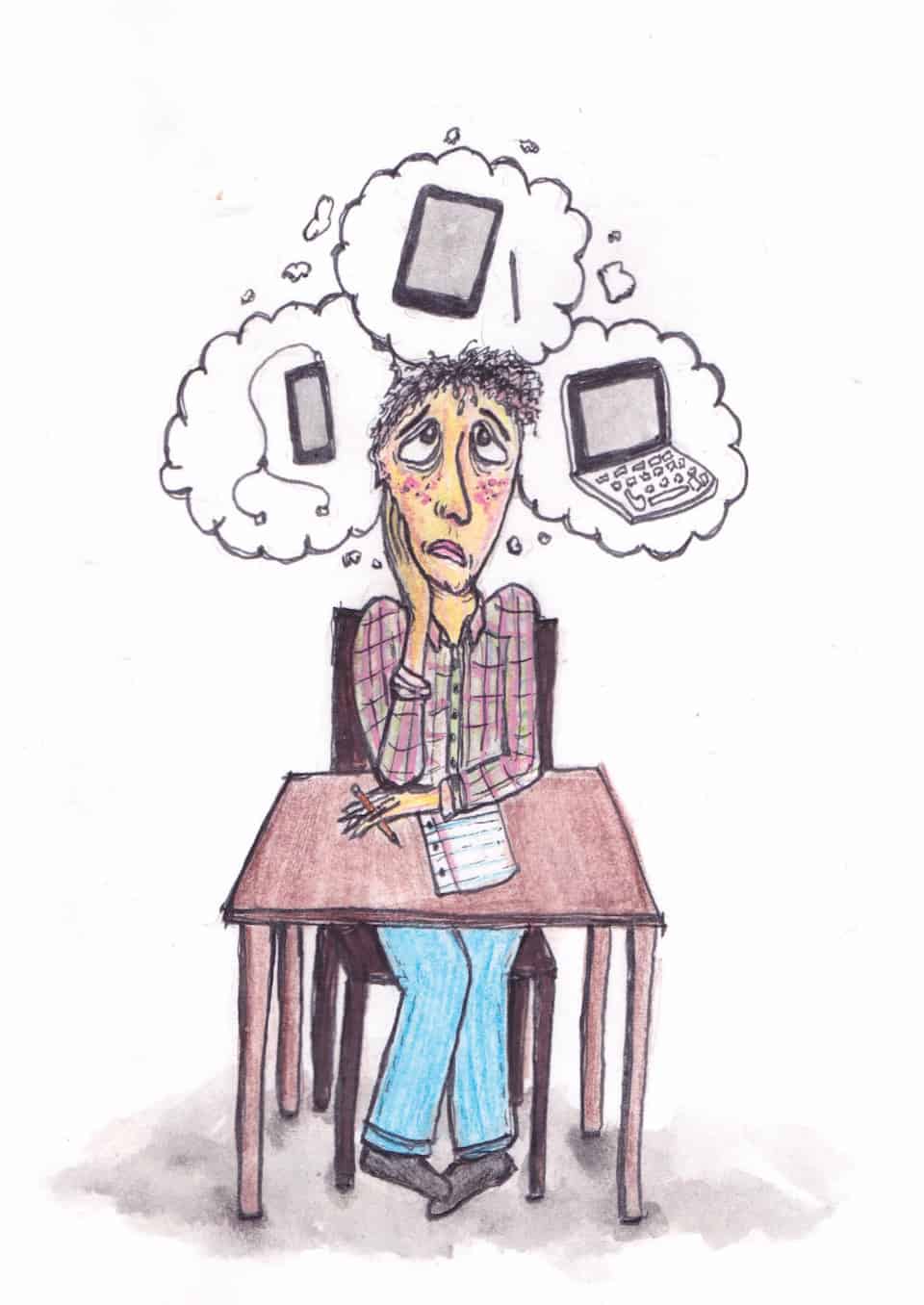[dropcap]The[/dropcap] way lecture material is presented, taught, and studied is changing. Many professors have adopted the PowerPoint approach over the more traditional “chalk and talk,” while students have ditched pen and paper in favour of laptops and tablets.
Yet, the use of technology in classrooms has been criticized for being potentially harmful to students. A recent article in the New Yorker presented a professor who chose to ban laptops in his classroom, after a study showing that “disconnected students” performed better in a post-lecture quiz than students who used technology during the lesson. However, though certain studies have shown that multi-tasking negatively impacts academic performance, the advantages bestowed by technology easily outweigh the disadvantages.
Technological devices allow students to compose notes more quickly and in a variety of interactive formats, whereas writing notes can make it difficult for them to keep up with the lecture. As a person afflicted with atrocious handwriting, my laptop allows me to take legible notes, copy and paste figures from lectures rather than poorly copying them. This allows me to pay more attention to what the professor is discussing. Some students have combined these two methods by annotating printouts of lecture slides.
Laptops and tablets also provide applications that can increase the accessibility of lecture materials. For instance, programs such as Dragon Naturally Speaking, which converts speech into text, can accommodate students with different levels of ability.
While technology has the potential to be distracting, considering how difficult it can be to stay engaged for three hours at a time, students themselves should not take all the blame. When technology is used correctly in a classroom setting, it can actually prevent students from checking Facebook.
[pullquote]When technology is used correctly in a classroom setting, it can actually prevent students from checking Facebook.[/pullquote]
In fact, the most engaging lecturers that I have had have incorporated technology into the classroom by using videos, animations and graphics to describe concepts. It is much clearer and easier to view a diagram presented on the screen than drawn on a chalkboard. The range of technology available to instructors also allows them to tailor their presentations to several different types of learning styles, and explain abstract concepts in interactive ways, thereby keeping students engaged.
As frustrating as platforms such as Blackboard may be, they allow students to ask lecturers questions and review material posted ahead of time. Furthermore, online courses offered at U of T are beneficial to commuters or individuals with part-time commitments. In the online classroom, students are often given windows for deadlines so they can make them work with their own schedules.
Yet there is no doubt that classrooms with integrated technology are not perfect; in fact, there are some developments that may still need some work. Some professors have adopted the “flipped classroom” approach — in which students learn lecture materials at home, and do activities usually qualified as homework during class time — which may cause some students to struggle with concepts they could once be taught directly by a professor. Furthermore, classes that offer supplementary online questions for purchase may pit students who cannot afford them at a disadvantage.
In light of this, it is important for educators to take the opinions of students into account when they are assembling their lecture materials. As students, in order to maximize the benefits we get out of educational technology, we should learn what approach works best for us, and make these views clear to our instructors. Technology in the classroom is here to stay, and with increased discussion and experimentation, we can gradually learn how to use it to its fullest potential.
Simon Spichak is a third-year student at New College studying neuroscience.


